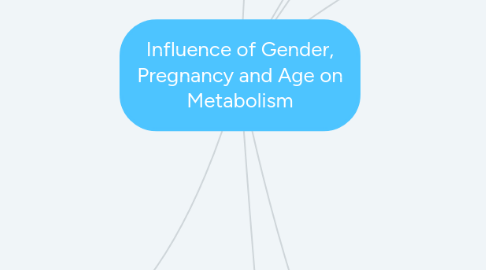
1. Age
1.1. Children and adolscent
1.1.1. Aerobic capacity
1.1.1.1. VO2max increases until the age of 17-18 in boys. In girls minimally beyond 15 - 15 yo. Because they have diff muscle mass. Boys tend to have higher VO2max. which means better O2 transportation and utilization.
1.1.1.2. Through the years, boys VO2max remain unchanged, and slightly declines in girls due to progressively increase in fat during adolescence.
1.1.1.3. When comparing aerobic capacity using relative VO2max, we should expect no difference between adults and children
1.1.2. Children demonstrate faster increase of VO2max during exercise copmared to adults (Faster reach to steady state).
1.1.3. O2 deficit and RER
1.1.3.1. ability to adapt their oxidative metabolism to meet the energy demands to the exercise. ---> Children activate aerobic system more rapidly.
1.1.3.2. Children seem to be able to derive energy from fat oxidation (Lower RER).
1.1.4. Metabolic efficiency
1.1.4.1. Lower economy of locomotion caused by multiple factors, such as: high RMR, high stride frequency, inefficient technique, excess contraction of antagonistic muscles.
1.1.4.2. Children are less efficient than adults.
1.1.5. Carbohydrate storage and utilization
1.1.5.1. Children have lower glycogen at rest, and reduced rate of glucogenolysis during exercise, due to less active enzymes. disadvantage for children to perform prolonged exercises, that are glycogen dependent.
1.1.5.2. Ethical consideration
1.1.6. Anaerobic capacity
1.1.6.1. Lower in children compared to adults.
1.2. Elderly people
1.2.1. Reduced VO2max and EE
1.2.1.1. VO2 declines 1% at each yeas, 10% every decade. Affected by decrease in HRmax & maximal cardiac output. Reduction on TEE related to reduction in BMR & DIT.
1.2.2. Alternations in enzymes and CHO metabolism
1.2.2.1. Reduction in the activity of oxidative enzymes, and the products of ATP. Decreased ability of mitochondria to consume O2 to generate energy. Impairment of CHO metabolism. Decrease glucose tolerance.
1.2.3. Alternation if fat metabolism
1.2.3.1. Impairment in fat metabolism. Reduced fat metabolism at rest and during aerobic exercise. increase in the size of adipose tissue, specially in the abdominal region.
1.2.3.2. Aerobic training is important to maintain or increase skeletal system size and function, therefore, improved health status.
2. Exercise intensity should not be increased compared to prepregnancy, especially in the first 14 weeks, and last 12 weeks.
3. Pregnant women have an increase in RMR, to build new tissues and to meet the demands of PA.
4. At rest: muscle glycogen content is high in the luteal phase.
5. - In luteal phase, both estrogen and progesterone production is high.
6. Gender differences in substrate metbolism
6.1. Fat oxidation
6.1.1. - Women are able to derive more EE from fat oxidation.
6.1.2. - can be due to the effect of menstrual phases on metabolic response to exercises.
6.1.3. -The effect of menstrual phases on exercise metabolism is abolished when exercise is performed at higher intensities.
6.2. Effect Of Sex Hormones
6.2.1. - At 35% - 60% of VO2mx exercise: lower CHO oxidation in the luteal phase.
6.2.2. - Estrogen decreases the utilization of CHO.
7. Pregnancy
7.1. Substrate metabolism
7.1.1. - alternation of substrate metabolism appear during the later stages.
7.1.2. From metabolic point of view, pregnancy have two halves:
7.1.2.1. 2- continues increase in estrogen and progesterone. The presence of these two hormones mobilize fat for energy, and mobilize plasma glucose at high levels. To protect fetus from hypoglycemia. & limiting factor for pregnant women to perform anaerobic exercises, because it relies on CHO.
7.1.3. 1- prepare the body to meet the deamands of the rapid fetal growth
7.2. Exercise during pregnancy
7.2.1. Pregnant women can tolerate moderate to low intensity ex. less than 30mins. 4 times per week.
7.2.2. Weight lifting exercises should be reduced, and use the body weight.
7.2.3. - benefits: counteracts the the effects of deconditioning. Help increase muscular strength, which speeds up the delivery. Prevent excessive weight gain and diabetes.
7.2.4. Exercise could be dangerous if it was excessive.

